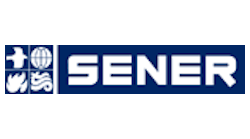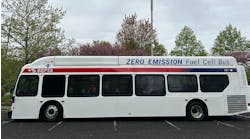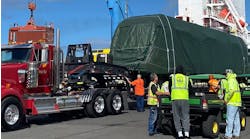SENER returned to the Middle East Rail exhibition to show its advances in railway projects all around the world, especially in the Middle East, where it has branches in Abu Dhabi and a strong presence in the region thanks to transport infrastructure contracts. The work carried out by SENER in the MENA area (Middle East and North Africa) led to its being declared Infrastructure and Transport Company of the Year, 2017, in the awards presented by the prestigious British magazine The European.
Among other projects, it undertook the preliminary design of the LRT (light rail train) in Abu Dhabi, the design and supervision of electrical and mechanical equipment on the extension to the Red Line in the Dubai (UAE) metro, and, acting as an independent checking engineering company (ICE), the verification and review of the design of lines 4, 5 and 6 of the Riyadh metro for the FAST consortium in Saudi Arabia, a total of 65 km with 25 stations and 24 viaducts.
In North Africa, it is undertaking the project for upgrading signage on the railway lines in the North of Morocco, on the Tangier — Sidi Kacem, Tangier – Ras Rmel and Sidi Yahya – Bel Ksiri routes, covering a total of 265 km with 22 passenger stations; projects for the Oran metro and line 1 of the Algiers metro, as well as the Saida-Moulay Slissen railway corridor, in Algeria; and work on section 1 of the national railway network in Oman. The Port Said project, in Egypt, is also noteworthy.
The company will also exhibit high-tech projects in other areas of the world. SENER's ability to deal successfully with complex schemes which involve major technological development has positioned it as one of the leading companies for high-tech projects.
They include the Mexican Hyperloop, a transport system that envisages connecting Mexico City to Guadalajara, via León and Querétaro, in 40 minutes. It is based on pods that levitate within tunnels and travel at speeds of up to 1,200 km per hour. SENER is also developing the Mexico City – Toluca intercity train, applying an innovative approach to construction using viaducts, rather than conventional tunnels.
Moreover, SENER is participating in major high-speed contracts in the United Kingdom and the USA. In the United Kingdom, together with the Atkins and CH2M companies, it forms part of the High Speed Two (HS2) Limited Engineering Delivery Partner (EDP) consortium, the government company responsible for developing and promoting the UK's new high-speed rail network. SENER will thus be working for the next 10 years with the aim of providing support to HS2 in the design, construction and start-up of the new 230 km London to Birmingham high-speed line. In the USA, SENER is working on several high-speed contracts in California, including the conceptual engineering for the high-speed project covering the 72 km section between Palmdale station in the North and Burbank Airport station in the South, for the California High Speed Rail Authority (CHSRA).
Lastly, in combined transport (freight and passengers), the company is participating in work on the central rail corridor in Tanzania, as part of the consortium carrying out construction projects on the rail link between Dar es Salaam and Morogoro.
In urban metro and transport systems, SENER has extensive experience with conventional metro services (the metro systems in Porto, Guadalajara, Los Angeles, Bangalore, Chennai, Santiago de Chile, Madrid, Lisbon, Bilbao, Algiers, Oran, Bogotá, Hanoi, Panama and São Paulo are all SENER projects), automated UTO systems (like line 9 in the Barcelona metro, the longest driverless line in Europe), light metro and tram lines (LRT) (as in Abu Dhabi, Porto, Valencia, Dublin, Tenerife, Kaohsiung, Oran and Taiwan), monorail, Bus Rapid Transit (BRT) and People Movers.
Altogether, SENER has worked on more than 15,000 km of railway studies and projects, 1,200 km of metro and LRT lines and over 70 urban transport systems, making it one of the world's leading companies in transport infrastructures. In all these areas of activity, it offers integrated engineering services (design, construction, start up, operation and maintenance) and implements intelligent transport systems that incorporate high-tech solutions.
In addition, SENER is engaged in projects for the urban integration of new high-speed lines, railway stations and rail terminals. They include Los Angeles Union Station (California), La Sagrera station in Barcelona (Spain), and the Puerta del Sol Transport Interchange in Madrid (Spain), which includes the largest excavated underground cavern in the world in a densely populated urban area.
Thanks to its experience, SENER has a complete, integrated approach to the development of transport systems, which enables it to participate in all stages of the project, from planning to the design, construction and operation of the line, and to cover all the technical disciplines involved with its own professionals, as its staff includes experts in each of them.



